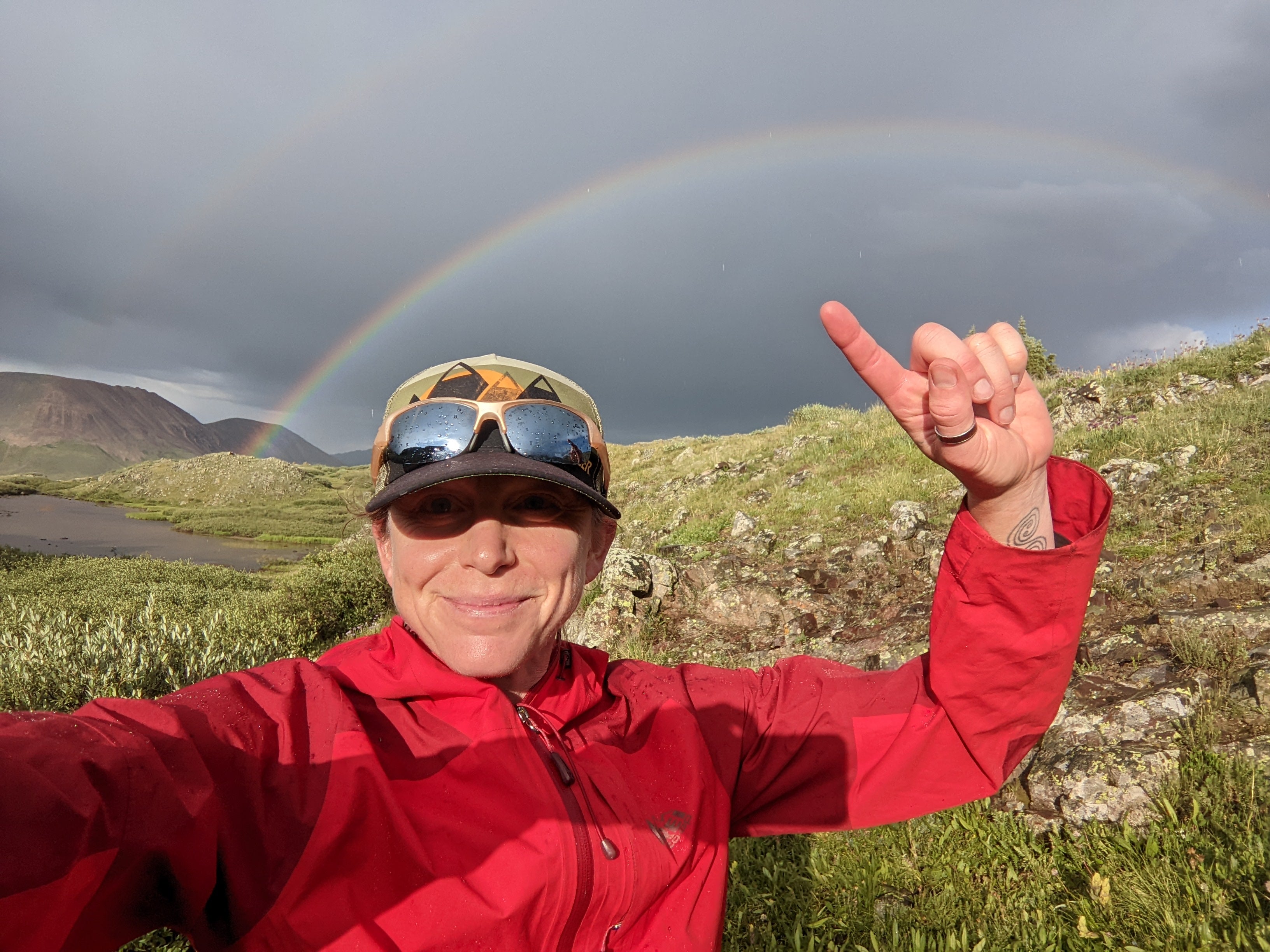It was all going so well. Until it wasn’t. I had spent the summer training for my first 100 mile mountain race scheduled for September 16. As soon as the snow melted, I started with long hikes in the San Juans, followed by big days of backpacking, interspersed with running on the roads and trails around Durango. I thought I was doing everything right. Having had a hamstring tendon surgically reattached not even two years before, I knew I had to be careful. I swam three times a week. I did strength training. I foam rolled. I ate enough. I went to bed early. In early August, I was feeling strong. Strava told me I was getting personal bests on some of the tougher high country trail runs that I had been running for years. I completed a huge 35 mile hike in one day. I felt that familiar feeling of deep inner confidence that comes when you know you are fit and your body is cooperating. My crew was all lined up. We were ready. It was a recovery weekend before my last big training push. I went up to Coal Bank Pass to do a moderate run up one of my favorite trails to Engineer Mountain. The pain in my left hip that had been whispering to me for about 6 weeks became a roar. Uphills were manageable. Downhills were excruciating. I was in denial. I kept running. I knew my stride was off. I didn’t want to believe it. I got back to my car and as the endorphins wore off, the pain grew worse. I iced. I used heat. I took ibuprofen. I went out the next morning and tried to do an easy loop around town. Every time I landed, I felt a jolt of pain from my hip down my thigh. Three days off, I promised myself. Try again on Thursday. I tried again on Thursday. It was August 25. It is now mid-November and I haven’t run and have barely walked since.

As athletes and adventurers, we become familiar with the knife’s edge that marks the line between pushing your limits and falling into injury. Having experienced both successes in ultrarunning and multiple injuries, I feel that I am constantly scanning my body for feedback. Is that pain in my foot another stress fracture? Is that tightness in my arch plantar fasciitis? Will that ache in my hamstring attachment lead to a tear? Did I just twist my ankle or tear a ligament? Most of the time, these niggles resolve themselves quickly and I carry on. A little extra stretching. More prehab. More rehab. My living room resembles a well equipped physical therapy office. I rarely sit on the couch, choosing instead to foam roll the knots and trigger points that constantly pop up in my glutes. Over the years, as I’ve been forcibly sidelined by injury, my relationship to running has become healthier- less of an obsession and more of a love affair. However, I have come to realize that a large key to my happiness lies in my ability to move outside- by bike, by running, by backpacking. I even discovered open water swimming. After the hamstring surgery in November of 2020, I fell into a dark hole of pain and fear. I had multiple compensatory issues, including a frozen knee, lower back issues, sciatica, and unexplained pain that coursed through my body. I got the nerve up to try to run 6 months after the surgery and walked myself well during a 10 day solo backpacking trip on the Colorado Trail just 9 months post op. I ran a 50 mile race last December. Movement in nature healed me. I thought I was through the worst of it.
It’s a humbling thing to go from running 20 miles over mountain terrain to barely being able to walk to the bathroom. It seemed to happen so quickly, but as I looked back through my training log, I saw the signs. July 5, 2022: Interval workout. Left hip felt tight. July 16, 2022: 10 miles. Very tired. Left hip hurt. July 12-13: Big backpacking overnight. Had to massage my left hip every few miles. Otherwise, felt great! July 30, 2022: Kennebec Mountain Run. Felt strong, but left hip aches. By early August, I started noticing that if I stopped during a run, I limped a few steps when I started to run again. We become so good at minimizing pain and justifying the continuation of our training. We laser focus on a goal and shut out anything that may compromise its accomplishment. This ability is a great blessing and detrimental curse. I’ve learned, but I still have so much more to be taught.

On September 28, I underwent hip surgery to repair a large labral tear in my left hip. While messing around in there, the surgeon found an impingement and shaved down some bone to prevent future injury. I am lucky to have an orthopedic surgeon I trust. It was our second time around and he understands how important running and backpacking is to me. Since my surgery, I have stared out the window of my condo as the leaves turned yellow and orange and then fell to the ground. The snow has started to fall and the temperatures have dropped. My backpacking gear sits in a box in my closet. My running shoes are no longer piled by the front door. I feel outside myself watching the world go by without me in it. I drive across town and forget how I got there. I cry easily. I don’t hang out with my friends as much because I am tired of answering the question, “How are you?” I watch too much Netflix. I wish I had known that a backpacking trip in late July would be the last night I would spend outside for the year. While my left hip is making progress, I am suffering debilitating compensatory injuries like last time. I developed bursitis and tendonitis in my right hip. I have lower back pain and sciatica. How do we deal with these falls from glory? How do we go from climbing mountains to barely walking to the bathroom? When the darkness falls behind our eyes and our brain searches for those familiar endorphins and serotonin bursts that only movement in the outdoors can bring, where do we find the light?
I do not know the answers. I know that I am not alone on this journey. My story is not unique. I do know that the only way through is to hold on to whatever light you can find at the end of this long tunnel. Even when that light flickers and seems to go out, imagine it is still there. My therapist compares hope to a lighthouse. In the darkest moments, just hang on and that light will circle back around and remind you that there is a path home. We cannot give up on our dreams. I cannot succumb to the fear that this is my new normal. As endurance athletes, we become familiar with brief flirtations with the pain cave. I am in the deepest pain cave of my athletic career. As I do during ultramarathons, I must sit down in it and explore. Find the vials of strength and tinctures of courage that are hidden in its walls. When you put one foot in front of the other over and over, you eventually run 100 miles. When you wake up one day after another and gain the tiniest bit more mobility, the littlest glimmer of pain relief, you eventually return to living. The trail awaits and I know that one day, I will put on a backpack and follow that trail until it leads me back to myself again. Until then, I will hold on to that flicker of light.

“Only to the extent that we expose ourselves over and over to annihilation, can that which is indestructible in us be found.” – Pema Chodron











Leave a comment
This site is protected by hCaptcha and the hCaptcha Privacy Policy and Terms of Service apply.